Many people use their dishwashers daily but often forget a key task: deep cleaning. Over time, bits of food, grease, and soap scum build up, making this kitchen appliance less efficient.
This buildup can also cause bad smells in the kitchen. The solution? Deep clean your dishwasher.
Deep cleaning a dishwasher should happen every other month to prevent these issues. This process will help remove grime and limescale that can clog parts of the machine. Our guide outlines easy steps to tackle this project using household items like baking soda, white vinegar, and a microfiber cloth.
You’ll see how simple it is to keep your dishwasher running well and smelling fresh. Ready to start? Let’s get your dishwasher sparkling again.
Key Takeaways
- Deep cleaning your dishwasher every other month removes buildup of food, grease, and soap scum, improving its efficiency.
- Use household items like baking soda and white vinegar for an eco-friendly way to eliminate odors and clean the appliance.
- Always remove and clean the filter along with spray arms regularly to prevent clogs that can affect washing performance.
- White vinegar helps dissolve greasy residue during a high temperature cycle, while baking soda freshens up the interior.
- Regular maintenance includes wiping down door gaskets and cleaning exterior surfaces to keep the dishwasher running smoothly.
Why Should You Deep Clean Your Dishwasher?
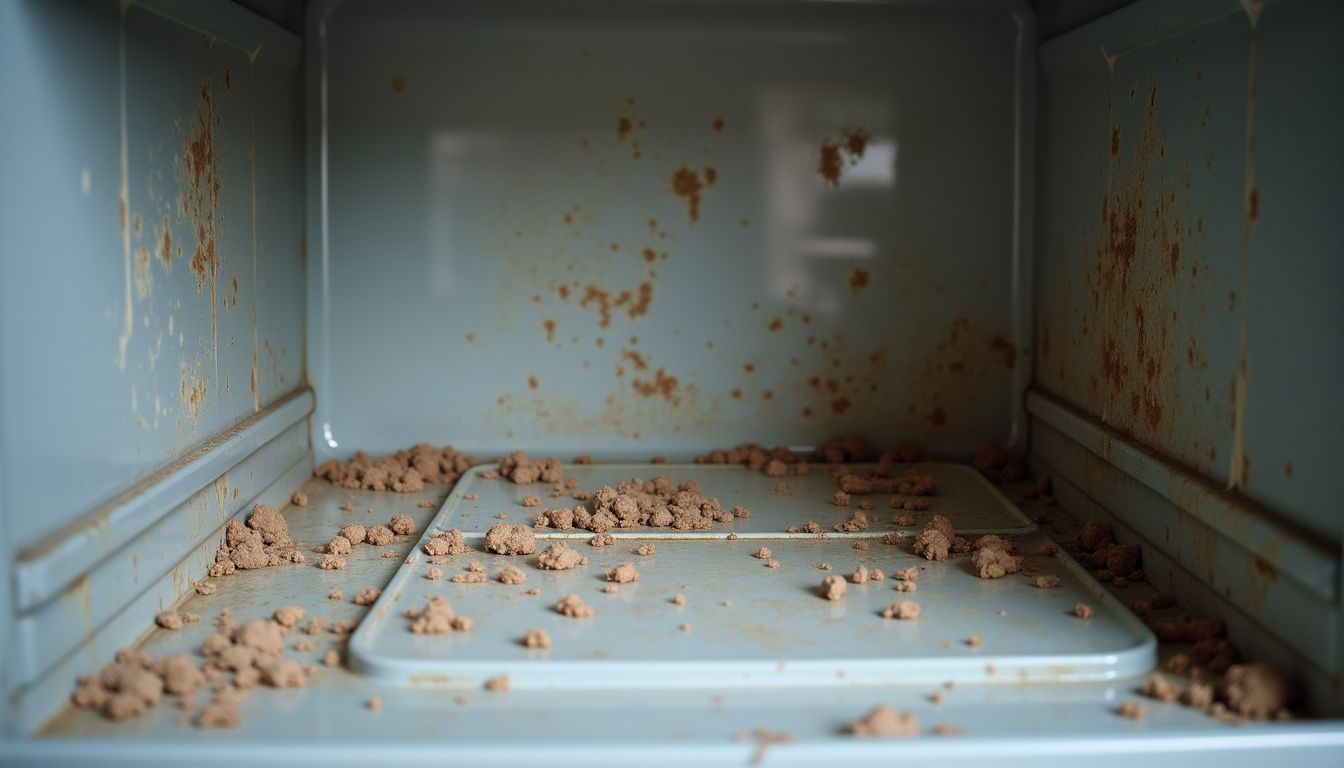
Deep cleaning your dishwasher is crucial for its efficiency and longevity. This process helps prevent buildup of grease, grime, soap scum, and limescale that can hinder performance.
Regular maintenance every other month ensures that mineral deposits do not block the water flow or leave residue on your dishes. A clean kitchen appliance like a dishwasher plays a vital role in keeping your utensils spotless.
Moreover, dishwashers require deep cleaning to control odors and maintain an optimal environment for washing dishes. Without regular deep cleans, food debris accumulates in the filter and spray arms, reducing the effectiveness of each wash cycle.
By using items such as baking soda, white vinegar, and dishwashing detergent during the cleaning process, house owners can eliminate unwanted smells and ensure their dishwasher operates at peak performance.
Now let’s prepare your dishwasher for cleaning.
Step 1: Prepare Your Dishwasher for Cleaning
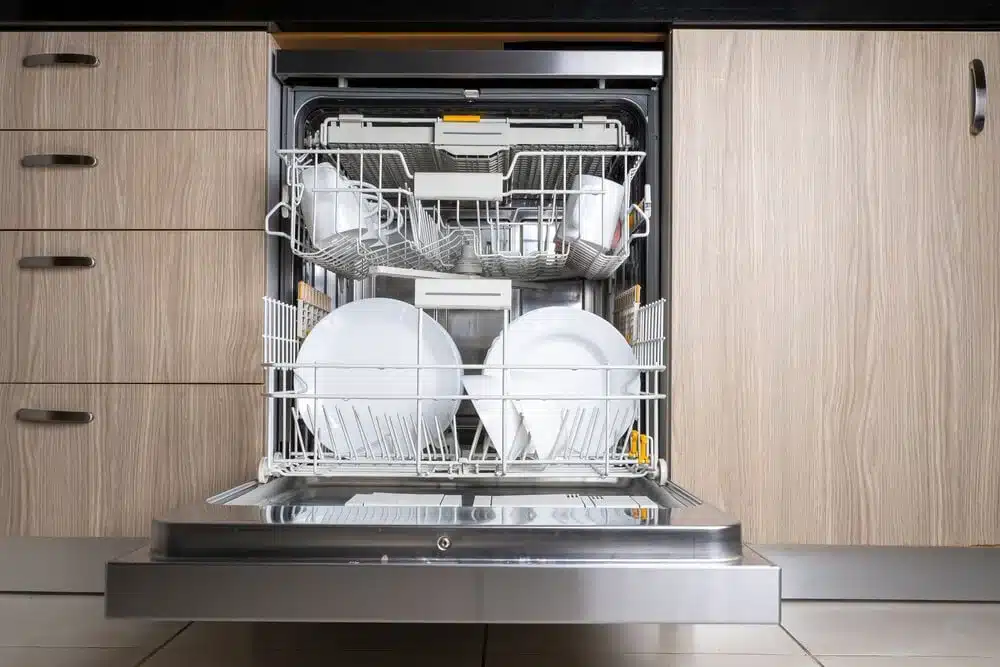
To start cleaning your dishwasher, you first need to get it ready. Clear away the bits of food and remove parts like the mesh filter and shelves for a thorough clean.
Remove food debris
House owners and parents face the challenge of keeping their kitchen appliances in top shape. Cleaning a dishwasher thoroughly starts with removing any food debris. They pull out the bottom rack to reach the dishwasher filter easily.
Often, they find bits of food that have settled near the filter. Getting rid of these particles is crucial for maintaining dishwasher performance and preventing odors.
They also run the garbage disposal before starting a wash cycle, ensuring nothing blocks water from draining properly. This step is vital as it helps avoid clogs in the dishwasher’s drainage system, leading to more efficient cleaning cycles.
Next up: taking out the filter and racks for a detailed wash.
Take out the filter and racks
To start the deep cleaning process, first remove the lower dish rack. This exposes the dishwasher’s bottom where you’ll find the filter. Dishwashers usually have this part under the bottom rack.
It comes in two pieces: an upper and a lower filter assembly. You need to lift these parts out carefully. Once you remove them, it allows for better cleaning of both filters.
Next, take out all racks and utensil holders from your dishwasher. This step makes it easier to get rid of food debris that might be hiding in corners or stuck on the racks themselves.
Cleaning with hot water and a mild dish soap helps break down any residue left behind on these components. For small spaces in baskets or caddies, a soft brush proves handy for removing stubborn particles without damaging any parts of your kitchen appliance.
Step 2: Clean the Dishwasher Filter and Spray Arms
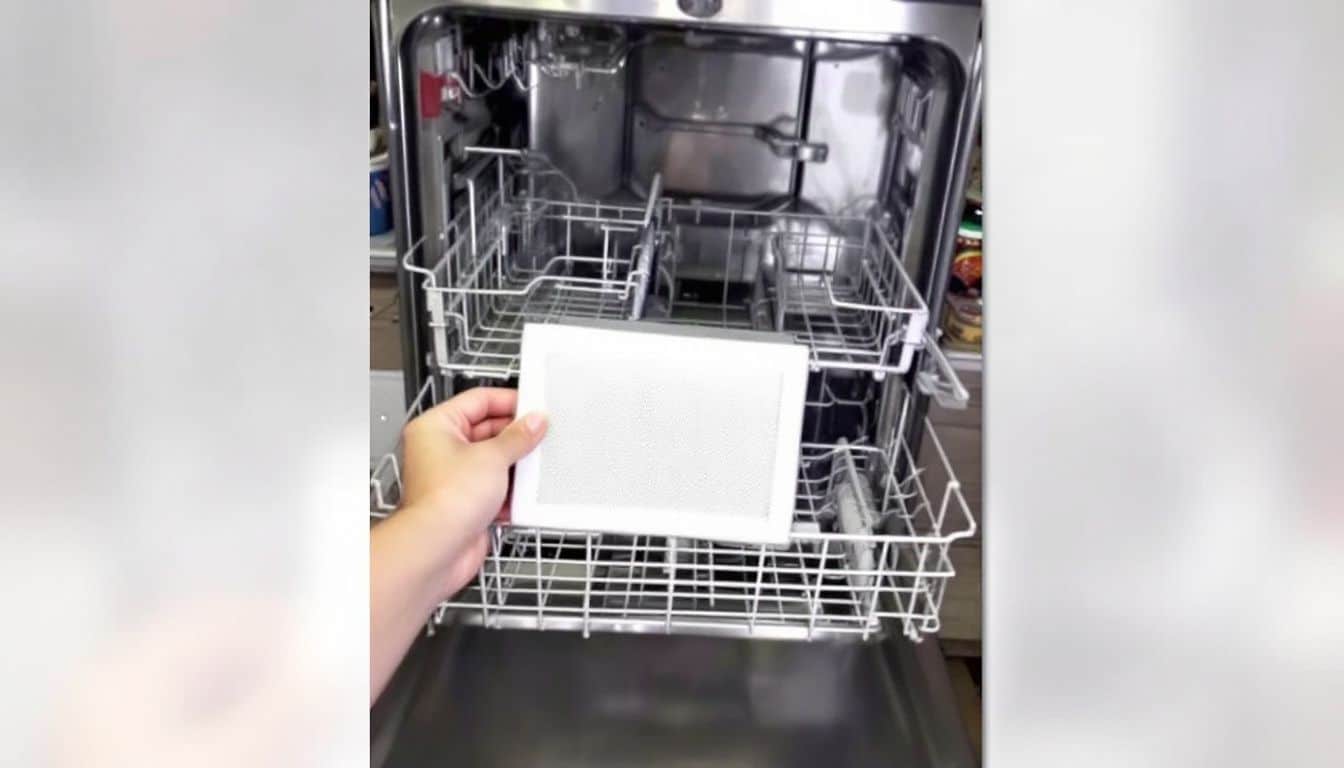
Cleaning the dishwasher filter and spray arms is crucial for maintaining the appliance’s efficiency and preventing clogs. This process involves a few simple steps that anyone can follow to ensure their dishwasher operates at its best.
- First, locate and remove the bottom rack to access the dishwasher filter. This part captures food debris and needs regular cleaning.
- Twist and lift the filter out of its slot. Newer dishwasher models might have a slightly different mechanism, so consulting the user manual could be helpful.
- Rinse the filter under running water to wash away loose particles. For tougher residue, use warm soapy water.
- Apply dish soap to an old toothbrush and scrub the filter gently. Focus on areas with stubborn grime until they are clean.
- Check if your model has self-cleaning filters. If it does, reading the manual will provide specific care instructions.
- Next, look for the spray arms located under the dishwasher racks or at the top of the machine. They may need to be unscrewed for removal.
- Hold each spray arm under warm water to rinse away any loose debris blocking the spray holes.
- Use a toothpick or similar tool to poke through and dislodge any particles stuck in the spray arms’ holes, ensuring water can flow freely during cycles.
- Once clear, shake off excess water from the spray arms and screw them back into place firmly but without over-tightening.
Proceeding with these steps ensures your dishwasher functions efficiently by removing obstructions that hinder water flow and cleanliness during wash cycles.
Next up is using white vinegar to cleanse the interior for a sparkling finish.
Step 3: Use White Vinegar to Clean the Interior
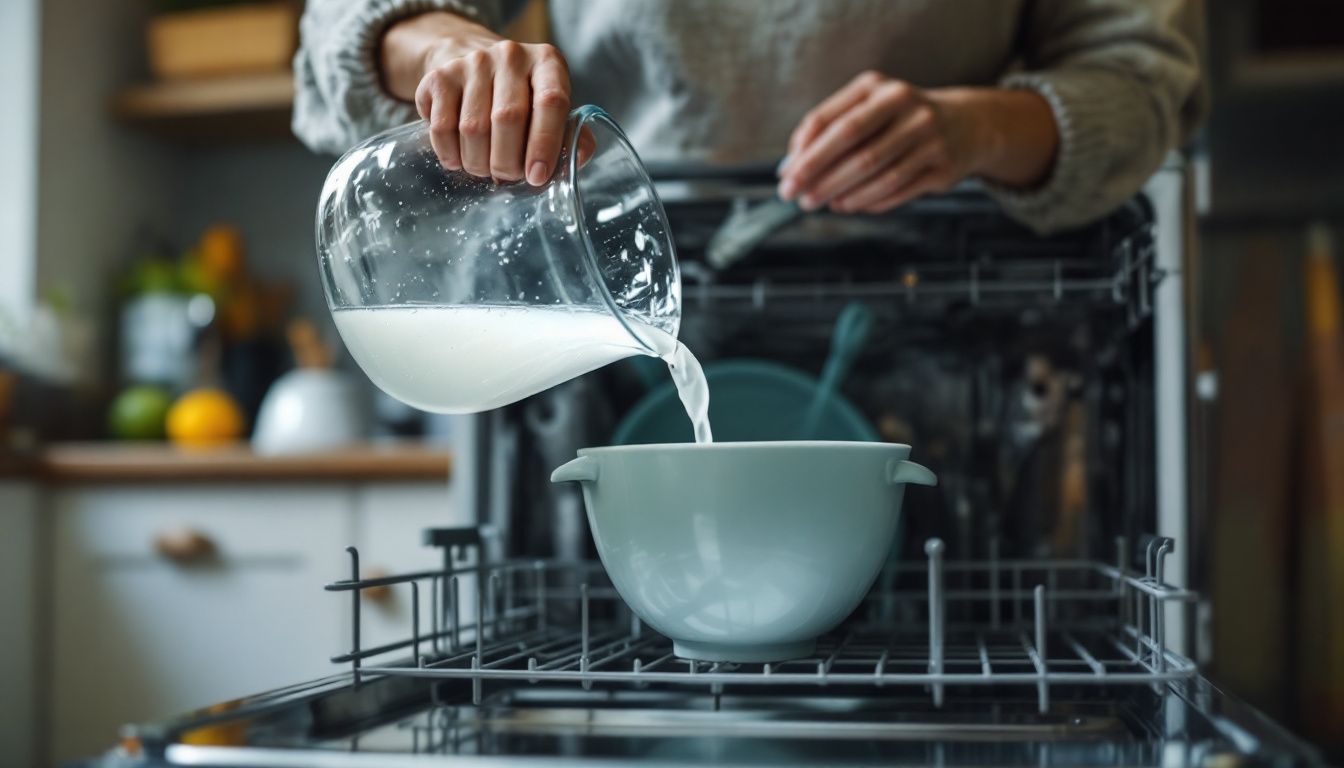
Homeowners and parents understand the necessity of maintaining kitchen appliances in optimal condition. White vinegar, owing to its organic cleaning attributes, plays a significant role in dishwasher maintenance.
- To begin, completely unload the dishwasher to ensure all areas are cleaned.
- Subsequently, fill a dishwasher-friendly container with 2 cups of distilled white vinegar. This step mitigates potential staining.
- Position the filled container on the dishwasher’s bottom rack for maximum cleaning exposure.
- Choose the highest temperature water cycle for comprehensive cleaning and sterilization.
- Operate the dishwasher on this mode without any dishes or cleansers inside.
- During this high-temperature cycle, the vinegar effectively dissolves oily buildup and dispels odors.
- Specialists advise repeating this process at least every 30 days to uphold a hygienic and functional appliance.
This uncomplicated use of vinegar helps dishwashers function effectively and extends their service life by preventing deposit accumulation and maintaining efficient operations.
Step 4: Sprinkle Baking Soda for Extra Freshness

Baking soda functions as a dishwasher deodorizer, providing a fresh scent without the use of intense chemicals.
- To begin, confirm that the dishwasher is devoid of any items. Empty any dishes or utensils before beginning this process.
- One cup of baking soda should be measured. This quantity excellently addresses unwanted odors and leaves your dishwasher smelling clean.
- Distribute the baking soda uniformly over the dishwasher’s bottom. Thorough coverage aids in odor neutralization.
- Seal the dishwasher and initiate a hot water cycle. The heat facilitates the dissolution of the baking soda and its dispersion throughout the appliance’s interior.
- Allow the cycle to finish without the addition of dishwashing detergent or other cleaning products. The aim is to allow the baking soda to function without interference.
This technique revitalizes your kitchen appliance while also supporting its performance by eliminating residue that may impede efficiency.
Step 5: Wipe Down Door Gaskets and Seals
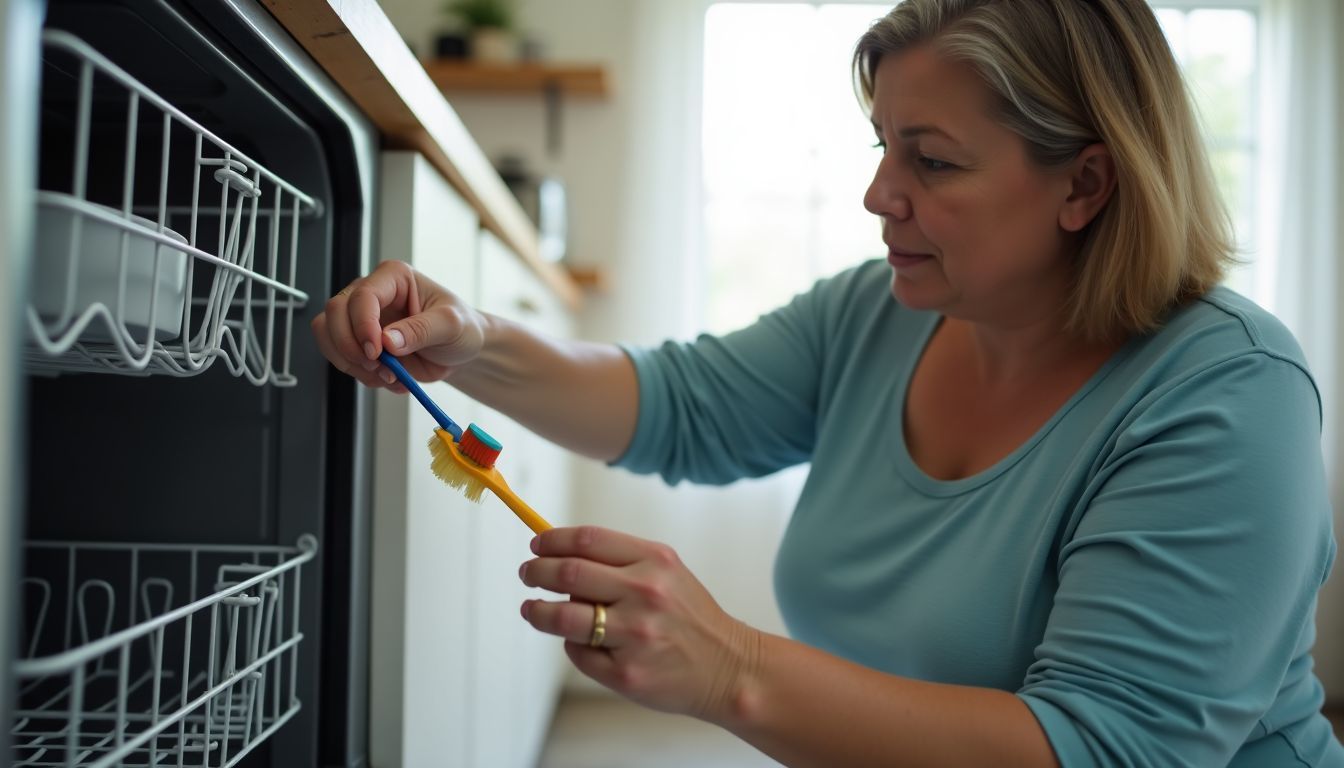
Door gaskets and seals play a big role in keeping a dishwasher running smoothly. Keeping them clean ensures the machine works efficiently and prevents leaks.
- Mix hot water with distilled white vinegar in equal parts. This mixture works well for cleaning.
- Choose a microfiber cloth for wiping down the rubber around the door. It’s gentle yet effective.
- Use a toothbrush for scrubbing the folds and hard-to-reach areas of the gasket. Toothbrushes get into tight spots easily.
- Dip the brush or cloth into the vinegar solution before each scrub. This keeps it clean and effective.
- Focus on wiping every fold and crevice of the door seal. Dirt hides in these spots.
- Regularly cleaning these parts maintains your dishwasher’s performance over time.
Cleaning door gaskets and seals doesn’t just prevent leaks; it also helps your dishwasher run better for longer.
Step 6: Clean the Exterior of the Dishwasher

Maintaining the cleanliness of both the interior and exterior of your dishwasher is equally essential for its aesthetic appeal and longevity. The below uncomplicated instructions will guide you through the process:
- Apply a mild detergent on a soft, damp cloth and gently wipe the exterior.
- For stainless steel surfaces, AFFRESH® Stainless Steel Brightener or a similar cleaner suitable for the particular finish should be used.
- Always dry the surface with a used towel to stop the occurrence of water spots and streaks.
- It is recommended to thoroughly clean the external part of your kitchen appliance every month to retain its appearance.
- Wipe in the grain direction on stainless steel dishwashers to avoid leaving scratches on the surface.
By adhering to these easy steps, your dishwasher will continue to operate efficiently and enhance the look of your kitchen.
Optional: Use Dishwasher Cleaner Tablets

Using dishwasher cleaner tablets can make a big difference in your routine. These tablets, like AFFRESH® Dishwasher Cleaner, target limescale and mineral buildup that normal cycles miss.
Just place one tablet in the dispenser or at the bottom of the tub. Then run a normal cycle to let it work its magic. This method fits well into a monthly deep cleaning schedule for your appliance.
Users should not mix these tablets with vinegar and baking soda during the same wash. Keeping these elements separate ensures each cleaning agent works effectively without interference.
Adding dishwasher cleaning tablets as part of your maintenance routine helps extend your machine’s life and keeps it running smoothly.
How Often Should You Deep Clean Your Dishwasher?
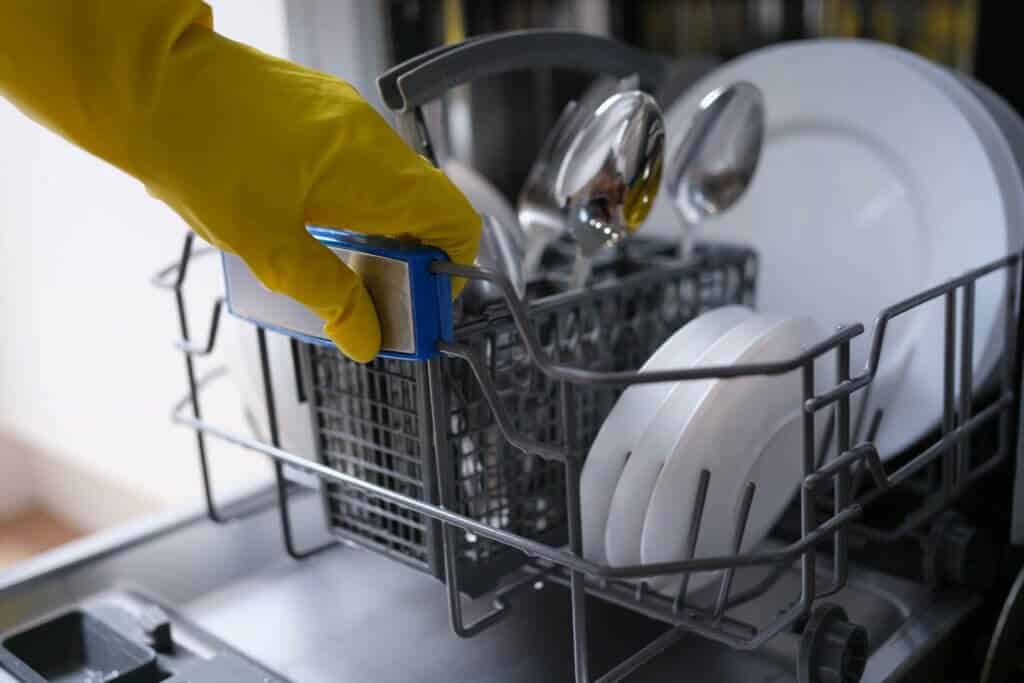
Experts recommend a thorough cleanse of your dishwasher every other month to ensure its efficient operation. This habitual procedure aids in preventing buildup and in sustaining the functionality of the machine.
The filter, an essential component for trapping food particles, requires attention as well. It’s advisable to clean it every three to six months, contingent on your device’s usage.
Homeowners often neglect this aspect, yet consistent upkeep can significantly prolong your dishwasher’s utility.
Equally important is tending to the requirements of the garbage disposal, primarily because of its connection with your dishwasher’s adequate drainage. Assuring its cleanliness on a regular basis is crucial as well.
Following these directions improves your dishwasher’s efficiency and helps maintain a fresh and pleasant smell.
Subsequently, we’ll provide some suggestions for maintaining the cleanliness of your dishwasher for a prolonged period.
Tips to Keep Your Dishwasher Cleaner for Longer
Keeping your dishwasher clean ensures it works well and extends its durability. Regular maintenance keeps buildup and unpleasant smells at bay.
- Pre-clean dishes of food waste before placing them in the dishwasher. This simple act prevents the filter from getting obstructed.
- Activate the garbage disposal before initiating the dishwasher to preserve a clear path for water draining.
- Weekly, wipe the dishwasher’s exterior using a microfiber cloth to keep it free from smudges.
- Clean the region around the door seal with soapy water every week to get rid of accumulated dirt that might cause leaks.
- Frequently inspect the drain for any food chunks or debris to confirm nothing impairs the water flow.
- Monthly, clean the dishwasher filter and spray arms with mild soap and warm water to improve its function.
- Monthly, place distilled white vinegar in a dishwasher-compatible container on the top rack to remove oil and smells during a cycle with hot water.
- Once a month, leave baking soda on the unit’s bottom overnight to absorb any persistent smells.
- Prefer dishwasher detergent pods over powder or liquid forms as they’re more effective and cause less residue.
- Utilize an old toothbrush for detailed cleaning of small areas where dirt can collect, like around rubber seals and in corners.
- Create a comprehensive cleaning routine every two months using these steps to prevent issues and lengthen your appliance’s service life.
Following these practices keeps your kitchen appliance in optimal condition, making comprehensive cleaning sessions less intimidating while improving its utility over time.
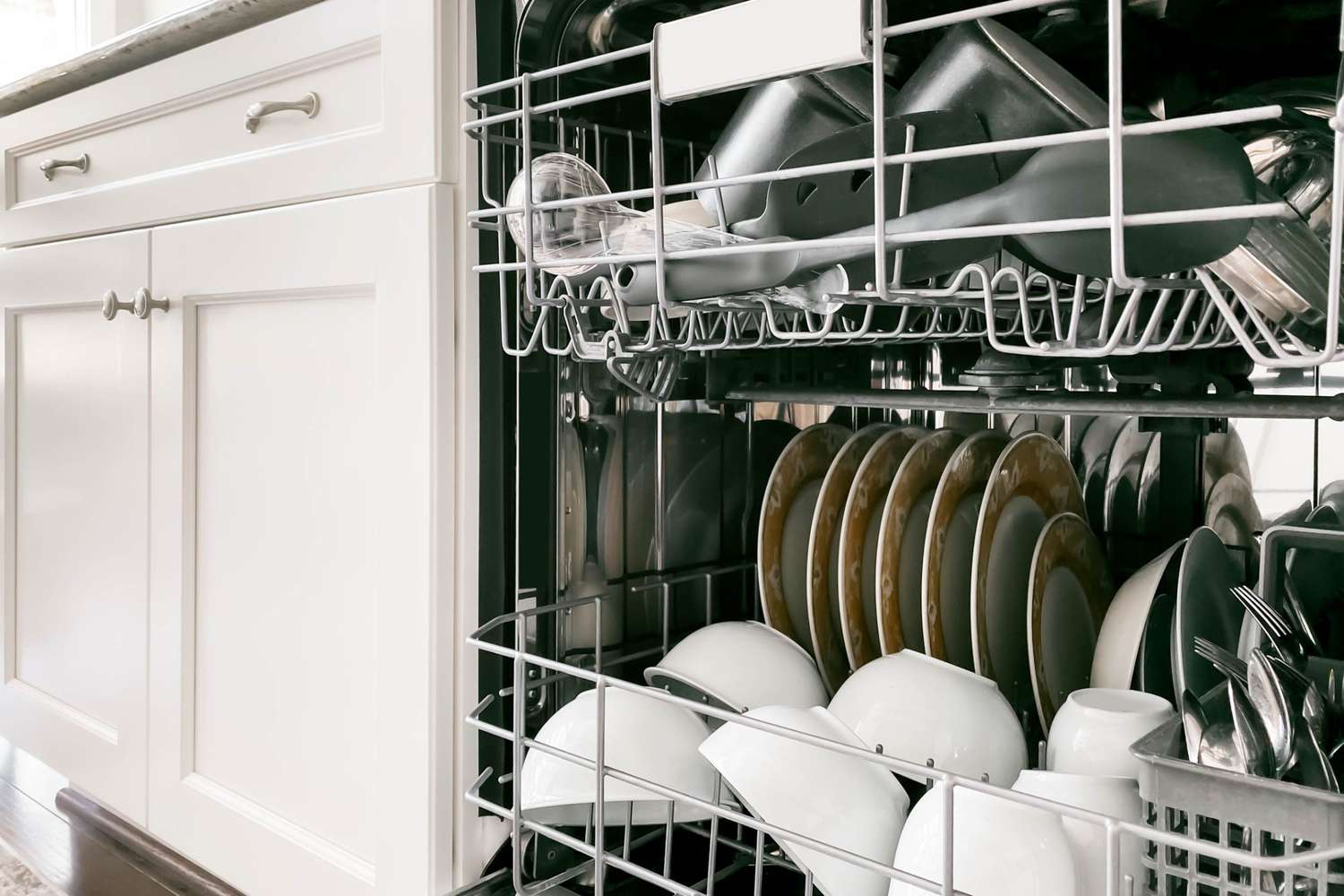
Conclusion
Deep cleaning your dishwasher ensures it runs efficiently and dishes come out spotless. Steps like scrubbing the filter, using baking soda, and a white vinegar cycle break down build-up and bad smells.
This routine keeps the appliance in top shape, extending its life and improving its performance. Regular upkeep avoids costly repairs down the line. A clean dishwasher supports a cleaner home with minimal effort.
FAQs
1. What is the best way to deep clean a dishwasher?
Deep cleaning a dishwasher involves several steps including removing and washing the dishwasher filter, spray arms, utensil holders, and racks with dish soap. Then run a hot water cycle with distilled white vinegar in a dishwasher-safe container.
2. How often should I perform dishwasher maintenance for optimal performance?
Dishwasher cleaning frequency varies based on usage but typically it’s recommended to deep clean your appliance once every month. Regular maintenance enhances its performance and extends its lifespan.
3. Can household items like baking soda and white vinegar be used for cleaning a dishwasher?
Yes! Baking soda helps in residue removal while running an empty hot water cycle with distilled white vinegar can help eliminate odors from your stainless steel or other types of dishwashers.
4. How do I clean hard-to-reach parts such as rubber seals and the drain area in my dishwasher?
You can use tools like toothbrushes dipped in soapy water or dishwashing detergent to scrub areas that are difficult to reach like rubber seals around the door seal or the drain area where food debris might gather.
5. Does deep cleaning also apply to external parts of my kitchen appliances such as dishwashers?
Definitely! Use warm soapy water along with microfiber cloth for wiping down stainless steel parts of your appliance exterior ensuring they remain shiny without any smudges.
6. Besides manual methods, are there specific products available for this purpose?
Yes, you’ll find products specifically designed for this purpose such as commercial-grade dishwasher cleaner tablets which not only aid in thorough cleansing but also act as deodorizer leaving behind pleasant fragrance post-cleaning.
References
- https://www.maytag.com/blog/kitchen/how-to-deep-clean-dishwasher.html
- https://thediyplaybook.com/how-to-deep-clean-dishwasher/
- https://www.affresh.com/knowledge-hub/how-to-use-dishwasher-cleaner-on-smelly-dishwasher/
- https://www.whirlpool.com/blog/kitchen/fixing-removing-and-replacing-dishwasher-filters.html
- https://www.tinyandtidy.co/blog/how-to-deep-clean-your-dishwasher
- https://www.whirlpool.com/blog/kitchen/how-to-clean-a-dishwasher.html
- https://www.thisoldhouse.com/house-one/21225351/deep-clean-your-dishwasher
- https://www.goodhousekeeping.com/home/cleaning/g2877/dishwasher-tricks/ (2024-05-29)
- https://www.homedepot.com/c/ah/how-to-clean-a-dishwasher/9ba683603be9fa5395fab90933193f6
- https://www.today.com/series/how-often-should-you/how-clean-dishwasher-t17946
- https://www.yahoo.com/lifestyle/often-clean-dishwasher-experts-reveal-083000280.html






